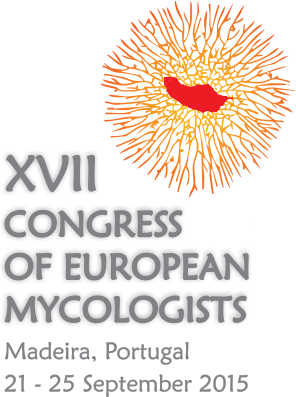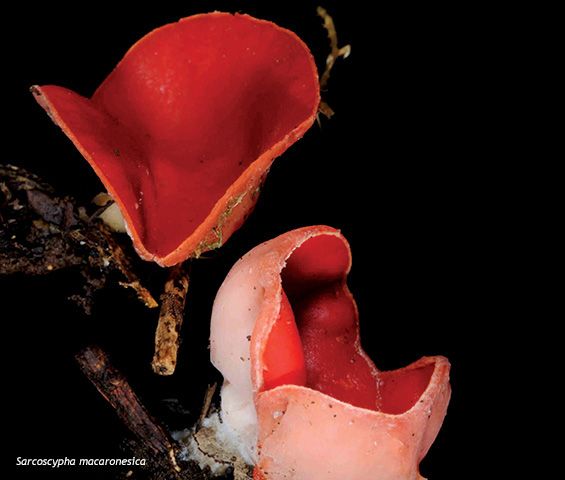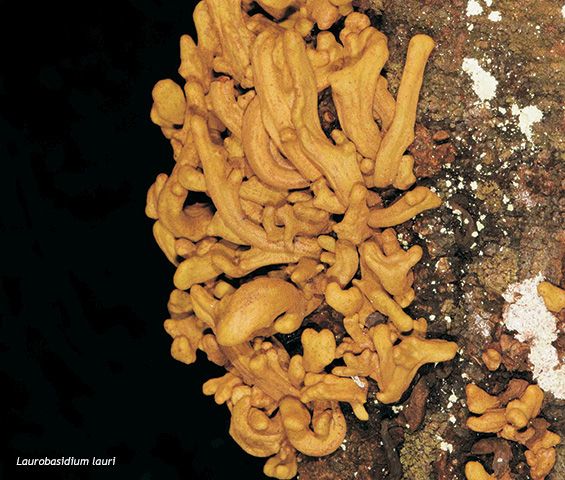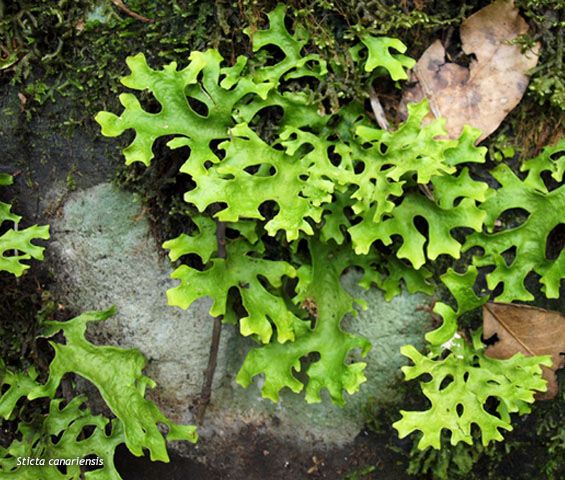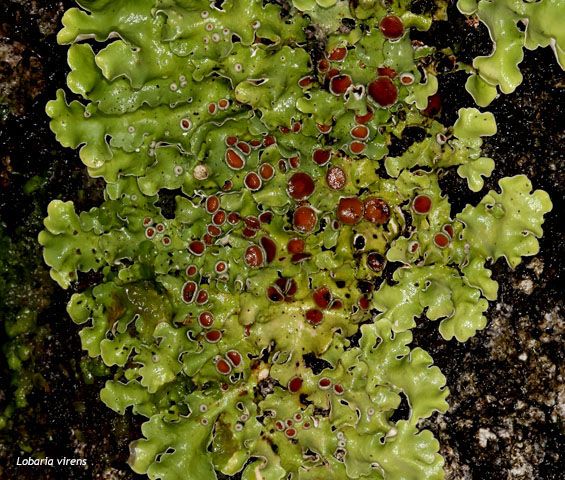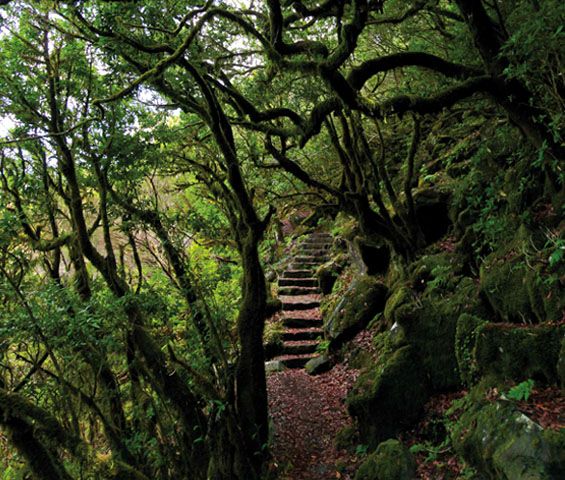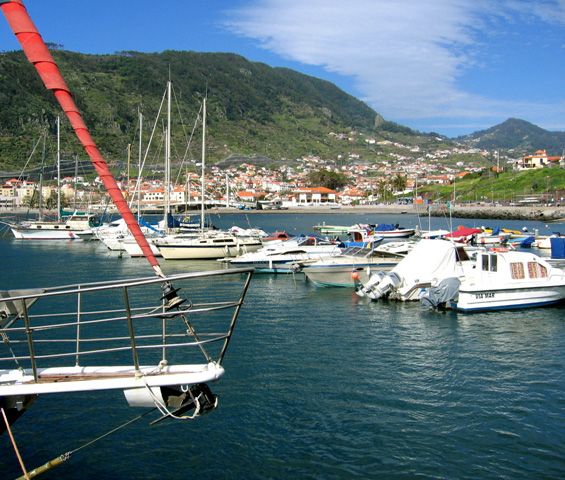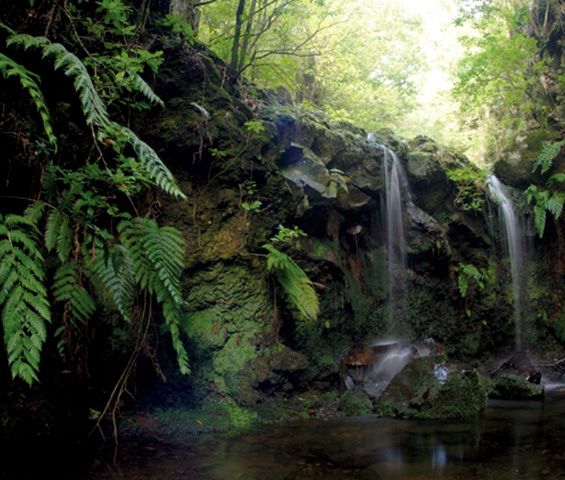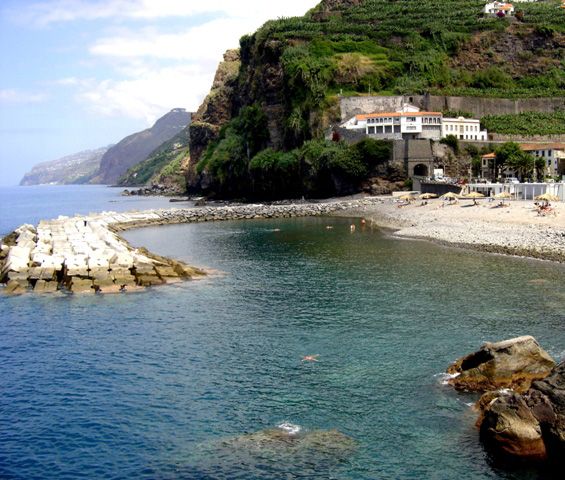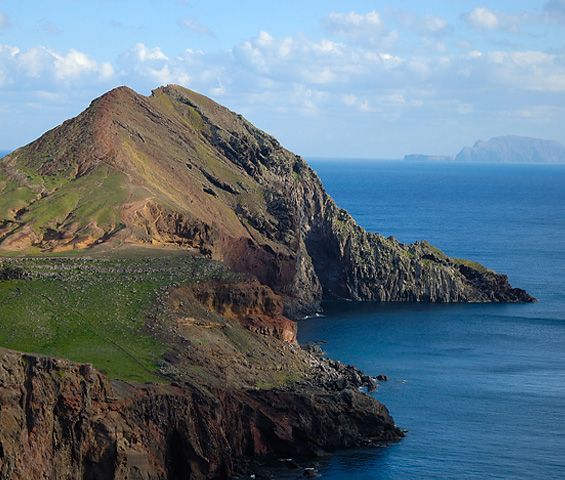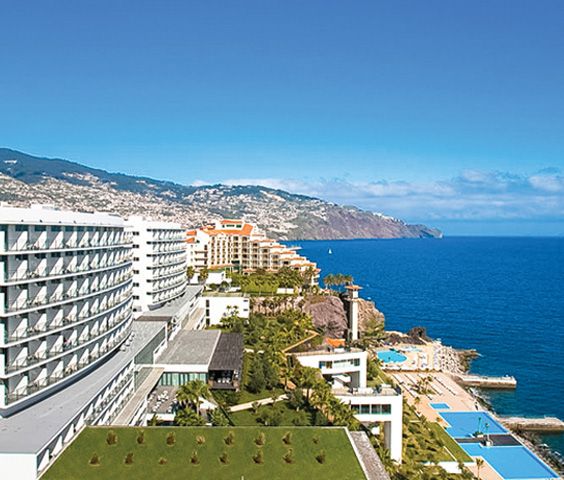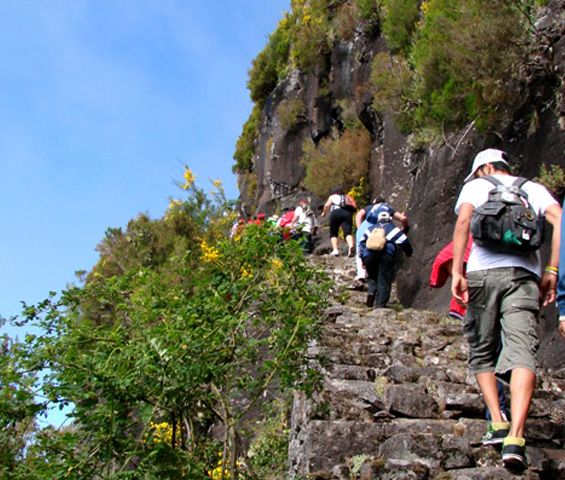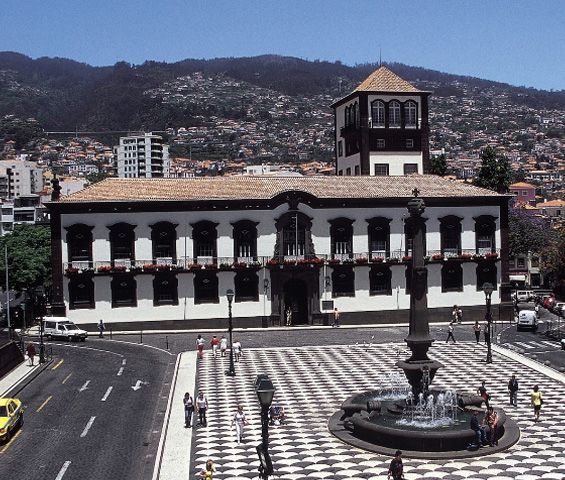Madeira Nature Reserve
Flora
The flora of Madeira has attracted the interest of botanists from many different nationalities since the 17th century. From Sloane, who first recorded a collection in Macaronesia, to the important works by R.T. Lowe in the 19th century, the Madeira archipelago has been a laboratory for naturalists concerned with islands’ biology.
The knowledge on the Madeira flora has influenced many important works. Due to its central position in Macaronesia, the island is a fundamental biogeographical link between both the other Macaronesian archipelagos – Azores, Canary Islands, Cape Verde and Savage Islands – and Europe and Africa.
Nowadays it’s still possible to find interesting nuclei of natural vegetation mainly in the northern face, which corresponds mostly to the temperate type of laurisilva (stink laurel forest, dominated by Ocotea foetens); there are also a few relicts of formerly much larger Mediterranean laurisilva (e.g. dominated by Apollonias barbujana) with an exclusive and mostly endemic flora. As Madeira bioclimatic conditions ranges from dry Mediterranean to cold humid temperate, this wide range of climatic conditions clearly explains why in Madeira there were (and still are in a few areas) strict Mediterranean micro-forests dominated by the endemic olive tree (Olea maderensis) in the dryer and warmer habitats close to the sea (mainly in the South-exposed parts of the island).
The wide scope of bioclimates also explains the occurrence of very special heath vegetation, where in the past gigantic Erica arborea and Juniperus cedrus could be observed; in this community Sorbus maderensis trees with their winter deciduous habit are a good example of cold adapted temperate plant.
But Madeira is also a “good” example of fast human driven ecosystem destruction. Actually tree cutting, fire, grazing, agriculture and more recently afforestation and urbanization led most of Madeira’s ecosystems to a near-extinction situation. Although large parts of humid laurisilva subsist, all the other types of ecosystems are endangered.
Although afforestation in large parts of the island began in the 19th century, it was later in the 20th century that it reached a peak, with large areas being afforested mainly with Pinus, Eucalyptus and Acacia species. But many other exotic tree species were introduced, which clearly explains the diversity of fungi that nowadays can be found in Madeira.
Fungi
Whereas the first references to the Madeira mycobiota were published in the first half of the 19th century (e.g. Holl, 1830)*, a thorough study of Madeira fungi started only in the early years of the 20th century by Camile Torrend (1909, 1912, 1913). In fact a large collection of fungi and lichens were sent abroad both to Torrend and to Longinos Navas by Madeira botanists, such as C. A. Menezes. Later on Viennot-Bourgin (1939) published an important contribution mainly on the phytopathogenic fungi, and more recently Gjaerum (1970, 1974, 1976, 1980, 1982), Gjaerum & Dennis (1976), Gjaerum & Hansen (1983-1984) and Gjaerum & Sunding (1986) enlarged the knowledge on this specific group of fungi. In 1977 Dennis and collaborators included an appendix of 22 Madeira taxa on their study on Azores mycobiota. Madeira Ascomycetae were studied by Korf (1978, 1981, 1992), Quelette & Korf (1979), Dissing & Korf (1980), Greenleaf & Korf (1980), Korf & Zhuang (1991), Iturriaga (1995), Iturriaga & Korf (1997, 1998). Tellería and collaborators (2008) studied the Corticioid fungi. Works by Calonge & Menezes de Sequeira (2003, 2007, 2009, 2011) and Calonge and collaborators (2008, 2009, 2010, 2012, 2013) increased the known Madeira mycobiota to more than 700 taxa.
* bibliographic references
Endemisms and protected species
The laurisilva of Madeira is notable for its biological diversity with at least 66 vascular plant species endemic to Madeira occurring in the site.
Thirteen liverwort species and 20 moss species are listed as rare or threatened on a European scale; and endemic animals include a species of pigeon (Madeiran long-toed pigeon, which eats the laurel fruits); a lizard species; two species of bat; and endemic subspecies of chaffinch and fire-crest.
The species listed below represent a small sample of iconic and/or IUCN Red Listed animals and plants found in the island (source: UNESCO/CLT/WHC):
- Accipiter nisus / Eurasian Sparrowhawk
- Apollonia barbujana / Barbusano / Canary Laurel
- Apus unicolor / Plain Swift
- Buteo buteo / Common Buzzard
- Columba livia / Rock Pigeon
- Columba trocaz / Trocaz Pigeon / Madeiran Long-Toed Pigeon
- Dactylorhiza foliosa / Madeiran Marsh Orchid
- Echium candicans / Pride of Madeira
- Euphorbia mellifera / Honey Spurge
- Falco tinnunculus / Common Kestrel
- Fringilla coelebs maderensis / Madeiran Chaffinch
- Isoplexis sceptrum / Giant Madeira Foxglove
- Laurus azorica / Macaronesian Laurel
- Laurus novocanariensis / Madeira Laurel
- Motacilla cinerea / Grey Wagtail
- Musschia wollastonii / Madeira Giant Bellflower
- Nyctalus leisleri / Lesser Noctule
- Ocotea foetens / Stinklaurel
- Persea indica / Madeira Mahogany
- Pipistrellus maderensis / Madeira Pipistrelle
- Pterodroma madeira / Zino's Petrel
- Regulus madeirensis / Madeiran Kinglet
- Teira dugesii / Madeira Lizard
- Turdus merula / Eurasian Blackbird
- Tyto alba / Barn Owl
Regarding lichens, only 8 are considered genuinely endemic taxa, according to the 2008 and previouscheck lists:
- Anzia centrifuga Haugan
- Bacidia albonigrans (Nyl.) Zahlbr.
- Bacidia endoleucoides (Nyl.) Zahlbr.
- Bacidia fritzei (Stein) Zahlbr.
- Biatora hertelii Printzen& Etayo
- Byssoloma kalbii Sérus.
- Byssoloma seroexspectata Sérus.
- Fissurina quadrispora Kalb
- Gyalidea madeirensis Kalb
- Nephroma areolatum P. James & F.J. White
- Ochrolechia maderensis Verseghy
- Phaeocalicium tibellii Kalb
Recent publications clearly show that taxonomic work is still needed in order to fully understand the apparently well-known Madeira biodiversity. In fact recently the interest on Macaronesian plants, bryophytes, likens and fungi diversity has increased and several key publications have been issued.
Further information about laurisilva of Madeira and of Macaronesia can be seen at http://whc.unesco.org/en/list/934
and http://ec.europa.eu/environment/nature/biodiversity/best/regions/macaronesia_en.htm, respectively.
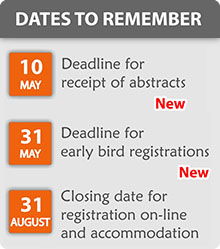
Avenida 5 de Outubro, 53-2 / 1050-048 Lisboa | Portugal
Project Manager: Sofia Gomes da Silva
P.: +351 21 315 51 35 F.: +351 21 355 80 02
XVIICEMsecretariat@mundiconvenius.pt
Scientific@xviicem.org
www.xviicem.org

